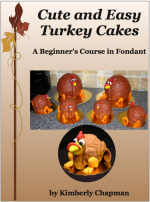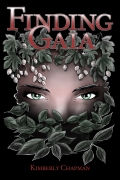I was invited by my good friend Kyla Myers of Crazy Cakes in Austin to a Facebook collaboration to raise money and awareness of Epidermolysis Bullosa, a rare genetic skin disorder in which skin blisters and tears at the slightest touch. Children born with EB are often called “butterfly children” because their skin is as fragile as the wings of a butterfly.
Debra is an international organization that provides support for families suffering with EB and also funds research towards a cure. If the above link stops working in the future or you need to donate via another country, please see the Debra International site or the Debra UK site.
Below is a video about my cake, individual photos, and a free tutorial on how to use Satin Ice Dark Chocolate fondant (or any other dark-coloured fondant) to make a bark effect.
As mentioned in the video, the meaning of the piece is to first catch the eye as a simple butterflies-on-a-stump cake, but then as you move around you see there is the shape of a huddled child, juxtaposing the toughness and rough appearance of the bark against a single butterfly on the child’s hand.













I stacked two 9×13 cakes and then the equivalent of 3 more cakes in decreasing sizes of rounds, carved and moved pieces as necessary, and covered it all in ganache. There is also minimal internal structure.

Butterflies airbrushed and one side hand-painted black.
Additionally, here’s a photo of a quick trick I learned for making butterflies that have their wings close together. While usually you’d use this PME plunger cutter with gumpaste and dry the butterflies on a folded bit of cardstock (as you can see in the background), I decided that for butterflies with their wings close together, it’d be nice if the patterned bit was on the other side. So I used one of the rails from my Mini Cake Pop Easy Roller set (the ones that you use to intially prepare your slab of cake ball stuff) as a rig for drying the butterflies with the pattern out. This turned out to be a good way to hold them while airbrushing as well.

Be sure to visit the collaboration page to see many other gorgeous works of art by some of the best decorators in the world, all dedicated to raising money to help fight EB.
Dark Chocolate Bark Effect
In creating this cake, I wanted to use my last remaining supply of my favourite chocolate fondant: Satin Ice Dark Chocolate. It’s available in the UK but fairly expensively, and too often short-dated so I’ve decided not to buy it here anymore. But it’s the darkest-tasting chocolate fondant I’ve found, so I’ll miss not having it anymore unless I can find a good deal on it at cake shows where I can check the date in advance.
But it turned out that starting with a dark fondant to create a bark effect was tricky business. I know from so many classes, videos, demos, and tutorials I’ve seen over the years that the cheap way to make a bark effect is to make a rough stick of crumpled aluminum foil, use that as a roller, and then colour the bark as needed. Usually that involves doing a dark wash to seep down into the cracks and then airbrushing or lightly dusting on colour on the surface layer.
It’s a fact of photography that dark surfaces don’t show up as well as bright ones, and I didn’t want this cake to look like a lump of darkness. I wanted the shaped features to stand out clearly, and the texture of the bark to come through.
So that meant I needed to lighten the surface layer while preserving those dark cracks.
I started out by making a sample slab of bark-effect fondant:

Make a crumpled stick of foil and roll it over your fondant. Add any additional lines or textures you need using modelling tools. Also, you can see here how poorly this dark slab comes out in photos.
Then I airbrushed that with white, trying to not get into the cracks. It didn’t work very well; the white went all over evenly, which I guess is the point of airbrushing. And even when I tried to then darken the lines back up with some warm brown, the whole thing just came out mildly bronzed-looking:


So I wadded it up and rolled it out again (one of the benefits of the dark chocolate fondant is it pretty much eats your colouring mistakes!), and this time tried instead a sponge-painting style approach. I put a tiny amount of Americolor Bright White on a plate and wadded up a bit of paper towel with a flat-ish side, then lightly tapped the towel into the white until I’d sponged it all over the plate, ensuring there was only a scant but even amount on the paper towel. Then I sponged that over the bark and what a dramatic effect it immediately made:

Then I went back to the airbrush and very lightly dusted some sections with a dark yellow:

And then more airbrushing with the warm brown again:

I was really happy with this look, and this is what I ended up doing on the entire cake later.
I also investigated what would happen if I did some green patches, like moss on a tree, and while it might suit some looks I decided I didn’t like it for this cake. In particular, I felt that it was darkening it too much when half the point was to make it lighter for photos.

That’s how you do it! Roll out your dark chocolate fondant with a crumpled foil stick, add any accent lines or whatever else is needed, sponge-paint on some white, then lightly airbrush any other additional tones as necessary. You could even stick with the white if that suits your tree style.
If you found this information useful, please once again remember the core point of this post: to raise funds and awareness for the Debra organization.





















